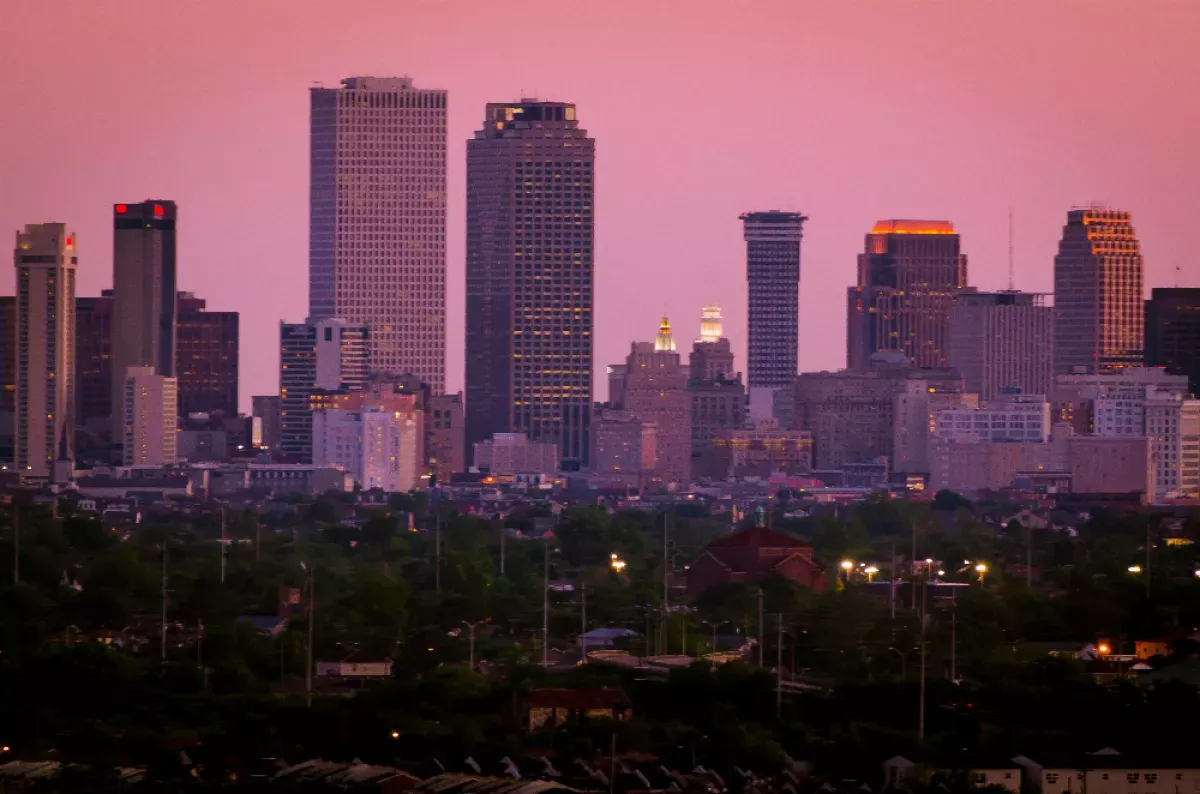New Orleans is the most populous city in Louisiana and a major port on the Mississippi River. It's the second-most populous city in the Deep South after Atlanta. The city's population was 383,997 in 2020, while the New Orleans metropolitan area has about 1 million residents. New Orleans serves as a significant commercial center for the Gulf Coast region and is coextensive with Orleans Parish.
July 1900: Robert Charles Riots in July 1900
In July 1900, New Orleans was swept by white mobs rioting after Robert Charles, a young African American, killed a policeman. The mob killed him and an estimated 20 other blacks; seven whites died in the days-long conflict, until a state militia suppressed it.
1900: Increase in Residential Segregation
New Orleans experienced an increase in residential segregation from 1900 to 1980.
1902: French Language in 1902
In 1902, it was estimated that "one-fourth of the population of the city spoke French in ordinary daily intercourse, while another two-fourths was able to understand the language perfectly."
1909: Grand Isle Hurricane
In 1909, portions of Greater New Orleans were flooded by the Grand Isle Hurricane.
1915: New Orleans Hurricane
In 1915, portions of Greater New Orleans were flooded by the New Orleans Hurricane.
December 27, 1923: End of L'Abeille de la Nouvelle-Orléans publication
On December 27, 1923, L'Abeille de la Nouvelle-Orléans (New Orleans Bee), the last major French language newspaper, ceased publication after 96 years.
1929: Streetcar strike in 1929
In 1929, a streetcar strike took place in New Orleans, during which serious unrest occurred. It is also credited for the creation of the distinctly Louisianan po' boy sandwich.
1938: Establishment of United Cab
United Cab was established in 1938 and has operated 365 days a year since, with one exception.
1945: French language usage in 1945
As late as 1945, many elderly Creole women in New Orleans spoke no English.
1946: DeLesseps Story Morrison's Administration in 1946
DeLesseps Story Morrison's administration began in 1946.
1947: 1947 Fort Lauderdale Hurricane
In 1947, portions of Greater New Orleans were flooded by the 1947 Fort Lauderdale Hurricane.
1948: Streetcar line becomes a bus line
In 1948, the streetcar line to Desire Street in New Orleans was converted into a bus line.
1954: Adoption of Home Rule Charter
In 1954, New Orleans adopted a home rule charter, which has since been amended, establishing a mayor-council government.
1954: Brown v. Board of Education ruling in 1954
The Brown v. Board of Education ruling was issued in 1954.
1955: End of Le Courrier de la Nouvelle Orléans publication
According to some sources, Le Courrier de la Nouvelle Orléans continued until 1955.
1956: Hurricane Flossy
In 1956, portions of Greater New Orleans were flooded by Hurricane Flossy.
1956: 1956 Sugar Bowl racial controversy
Racial controversy surrounded the 1956 Sugar Bowl, when Georgia governor Marvin Griffin opposed the participation of Pitt Panthers African-American fullback Bobby Grier. Georgia Institute of Technology president Blake R. Van Leer defied the governor, and the game proceeded.
1960: Population Decrease Begins
Beginning in 1960, the population of New Orleans decreased due to factors such as the cycles of oil production and tourism, and as suburbanization, diversity, and white flight increased.
1960: Miami Eclipses New Orleans in 1960
In 1960, Miami eclipsed New Orleans, even as the latter's population reached its historic peak.
1960: Historic Population Peak
Prior to 1960, the population of New Orleans steadily increased to a historic 627,525.
1960: Segregation in public schools until 1960
Public schools in New Orleans were racially segregated until 1960.
1960: School desegregation tensions in 1960
Tensions escalated in New Orleans in 1960 during school desegregation following the Brown v. Board of Education (1954) ruling. Six-year-old Ruby Bridges integrated William Frantz Elementary School, becoming the first child of color to attend a previously all-white Southern school.
1961: Victor H. Schiro's Administration in 1961
Victor H. Schiro's administration began in 1961.
1963: New Year's Eve Snowstorm
The New Year's Eve 1963 snowstorm affected New Orleans and brought 4.5 inches (11 cm) of snow.
1964: Civil Rights Act of 1964
The federal Civil Rights Act of 1964 restored key constitutional protections in New Orleans, but economic and educational disparities between Black and White residents remained.
1965: Flood Control Act of 1965
After the Flood Control Act of 1965, the U.S. Army Corps of Engineers built floodwalls and man-made levees around a much larger geographic footprint that included previous marshland and swamp.
1965: Hurricane Betsy in 1965
Awareness of New Orleans' vulnerability to flooding grew after Hurricane Betsy in 1965.
1965: Voting Rights Act of 1965
The Voting Rights Act of 1965 restored key constitutional protections in New Orleans, but economic and educational disparities between Black and White residents remained.
1970: Population decline in 1970
The 1970 census recorded the first absolute decline in population since the city became part of the United States in 1803.
1972: One Shell Square Becomes City's Tallest Building
In 1972, One Shell Square became the tallest building in New Orleans, demonstrating the viability of skyscrapers in the city.
1979: Record Number of Homicides
In 1979, New Orleans reached a record of 242 homicides.
May 31, 1980: States-Item ceased publication
On May 31, 1980, the afternoon newspaper, States-Item, ceased publication.
1980: Black-majority leadership emerged in 1980
Beginning in 1980, Black-majority leadership emerged in New Orleans, working to address entrenched socioeconomic inequities.
1980: Increase in Residential Segregation
New Orleans experienced an increase in residential segregation from 1900 to 1980.
1984: Establishment of Alliance Française
In 1984, the Alliance Française of New Orleans, a chapter of the international Alliance Française organization, was established as a cultural center promoting French language and culture.
December 1989: Snowfall during the December 1989 United States cold wave
In December 1989, most of the city received 1–2 inches (2.5–5.1 cm) of snow during the December 1989 United States cold wave.
December 22, 1989: Snowfall during the December 1989 United States cold wave
On December 22, 1989, most of New Orleans received 1–2 inches (2.5–5.1 cm) of snow during the December 1989 United States cold wave.
December 23, 1989: Record Low Temperature at New Orleans International Airport
On December 23, 1989, New Orleans International Airport recorded a temperature of 11 °F (-12 °C).
1989: Increased Homicides
By 1989, the homicide rate in New Orleans reached 250 homicides.
1990: Growing Predominantly Black City
Growing into a predominantly Black and African-American city by race and ethnicity since 1990.
1991: Increase in Homicides
By the end of 1991, the number of homicides in New Orleans had climbed to 345.
1991: Start of 1991-2020 Climate Normals
In 1991, the USDA hardiness zone was 9b, with the coldest temperature in most years being about 27.6 °F (-2.4 °C).
1993: Murders in New Orleans
In 1993, New Orleans had 395 murders.
1994: Named "Murder Capital of America"
In 1994, New Orleans was officially named the "Murder Capital of America", hitting a historic peak of 424 murders.
1995: Louisiana Flood on May 8th 1995
Awareness of New Orleans' vulnerability to flooding grew after the May 8th 1995 Louisiana Flood. These events exposed the limits of the drainage system, prompting upgrades.
1996: Unpaid Judgments Against the City
As of 1996, the city of New Orleans has outstanding unpaid judgements.
1998: Hurricane Georges
In 1998, portions of Greater New Orleans were flooded by Hurricane Georges.
1999: Drop in Murder Rate
In 1999, New Orleans saw a drop in the murder rate to a low of 158.
2000: Highest Homicide Rate Per Capita
Between 2000 and 2004, New Orleans had the highest homicide rate per capita of any city in the U.S., with 59 people killed per year per 100,000 citizens.
2000: The Real World: New Orleans
In 2000, The Real World: New Orleans, a television program, was filmed in the city.
2000: Population recovery in 2000
Ten years after Hurricane Katrina, the population of New Orleans had recovered to 80% of what it was at the 2000 census.
2000: Fewer People than 2000
The 2020 census revealed the city now has a more diverse population than it did before Katrina, yet 21% fewer people than it had in 2000.
2002: Tax Incentives for Film and Television
In 2002, Louisiana began offering tax incentives for film and television production, leading to a substantial increase in activity and earning New Orleans the nickname "Hollywood South".
2003: Winter Season with No Freezing Temperatures
The 2003–04 winter season passed with no freezing temperatures in New Orleans.
2004: Highest Homicide Rate Per Capita
Between 2000 and 2004, New Orleans had the highest homicide rate per capita of any city in the U.S., with 59 people killed per year per 100,000 citizens.
2004: Christmas Eve Snowstorm
During the 2004 Christmas Eve Snowstorm, a small amount of snow fell in New Orleans.
2004: New Orleans Tourism Numbers
In 2004, New Orleans was one of the top ten most-visited cities in the United States with 10.1 million visitors.
2004: Tourism Industry in New Orleans
In 2004, the hospitality industry in New Orleans was the city's top economic sector based on employment, employing 85,000 people. The tourist and convention industry was a $5.5 billion industry accounting for 40 percent of city tax revenues in 2004.
2004: Pre-Katrina School District Performance Score
Prior to Hurricane Katrina, in 2004, the New Orleans school district posted a performance score of 56.9.
July 1, 2005: Population Estimate Before Hurricane Katrina
As of July 1, 2005, the last population estimate before Hurricane Katrina was 454,865.
July 2005: Household Report by The Greater New Orleans Community Data Center
A September 2007 report by The Greater New Orleans Community Data Center, found that in August 2007, just over 137,000 households received mail. That compares with about 198,000 households in July 2005, representing about 70% of pre-Katrina population.
August 2005: Hurricane Katrina impact on Sunset Limited route
Up until August 2005, when Hurricane Katrina struck, the Sunset Limited's route continued east to Orlando.
August 29, 2005: Hurricane Katrina and levee failure on August 29, 2005
On August 29, 2005, Hurricane Katrina struck New Orleans, causing the federal levee system to fail. Floodwalls and levees constructed by the United States Army Corps of Engineers failed below design specifications and 80% of the city flooded. More than 1,500 people were recorded as having died in Louisiana, most in New Orleans, while others remain unaccounted for.
September 2005: Hurricane Rita postpones repopulation efforts in September 2005
In September 2005, the approach of Hurricane Rita caused repopulation efforts in New Orleans to be postponed, and the Lower Ninth Ward was reflooded by Rita's storm surge.
2005: Hurricane Katrina Devastates Transit Service
In 2005, Hurricane Katrina severely impacted transit service in New Orleans.
2005: High Poverty Rate
In 2005, New Orleans had a poverty rate of 24.5%, almost twice the national average.
2005: Hurricanes Katrina and Rita
In 2005, portions of Greater New Orleans were flooded by Hurricanes Katrina and Rita. The flooding from Katrina was disastrous for the majority of the city.
July 2006: Population Increase Since July 2006
A population analysis released in August 2007 estimated the population to be 273,000, 60% of the pre-Katrina population and an increase of about 50,000 since July 2006.
July 2006: Population estimate of 223,000 in July 2006
The U.S. Census Bureau in July 2006 estimated the population of New Orleans to be 223,000 in the aftermath of Hurricane Katrina.
November 7, 2006: Constitutional Amendment to Consolidate Tax Assessors
On November 7, 2006, a constitutional amendment was passed to consolidate the seven tax assessors into one office.
2006: Geology study in 2006
A study published in Geology in 2006 by an associate professor at Tulane University claims that the magnitude of subsidence potentially caused by the draining of natural marsh in the New Orleans area and southeast Louisiana is a topic of debate.
2006: Return of College bowl games in 2006
In 2006, College bowl games returned for the 2006–2007 season in New Orleans.
2006: Louisiana Voters Adopt Amendment for Coastal Restoration
In 2006, Louisiana voters overwhelmingly adopted an amendment to the state's constitution to dedicate all revenues from off-shore drilling to restore Louisiana's eroding coast line.
2006: Most Dangerous City in the Country
In 2006, New Orleans was ranked as the most dangerous city in the country, with nearly half the population gone and widespread disruption due to Hurricane Katrina.
2006: Study on Undocumented Immigrants
In 2006, a study determined that as many as 10,000 to 14,000 undocumented immigrants resided in New Orleans.
2006: Establishment of Office of Inspector General
In 2006, an ordinance established an Office of Inspector General to review city government activities.
2006: Louisiana Film & Television Studio Complex
In 2006, work began on the Louisiana Film & Television studio complex, located in the Tremé neighborhood.
January 2007: Rally Demanding Action on Crime
In January 2007, several thousand New Orleans residents marched to City Hall for a rally demanding that police and city leaders tackle the crime problem.
May 2007: Decline in Hotels Post-Katrina
In May 2007, the number of hotels and motels in the Greater New Orleans Area had declined to approximately 140 with over 31,000 rooms, a decrease from the 265 hotels with 38,338 rooms that operated prior to Hurricane Katrina.
June 2007: Increase in Hispanic and Latino American Population
In June 2007, one study stated that the Hispanic and Latino American population had risen from 15,000, pre-Katrina, to over 50,000.
August 2007: Population Analysis After Hurricane Katrina
A population analysis released in August 2007 estimated the population to be 273,000, 60% of the pre-Katrina population and an increase of about 50,000 since July 2006.
September 2007: Household Report by The Greater New Orleans Community Data Center
A September 2007 report by The Greater New Orleans Community Data Center, found that in August 2007, just over 137,000 households received mail. That compares with about 198,000 households in July 2005, representing about 70% of pre-Katrina population.
2007: Tulane and Xavier University study in 2007
A 2007 study by Tulane and Xavier University suggested that "51%... of the contiguous urbanized portions of Orleans, Jefferson, and St. Bernard parishes lie at or above sea level," with the more densely populated areas generally on higher ground.
2007: Population recovery in 2007
By summer 2007, New Orleans was estimated to have regained approximately 60% of its pre-Katrina population.
2007: Tax Incentives for Music and Theater
In 2007, Louisiana began to offer similar tax incentives for music and theater productions, leading some commentators to refer to New Orleans as "Broadway South".
2007: New Orleans Saints return and new festival in 2007
In 2007, The New Orleans Saints returned that season. The New Orleans Hornets (now named the Pelicans) returned to the city for the 2007–2008 season. A new annual festival, "The Running of the Bulls New Orleans", was created in 2007.
January 2008: Mid-Range Estimate of Brazilian Population
In January 2008, the New Orleans Brazilian population had a mid-range estimate of 3,000 people.
October 2008: First World Cultural Economic Forum
In October 2008, New Orleans hosted the first World Cultural Economic Forum (WCEF) at the New Orleans Morial Convention Center, aimed at promoting cultural and economic development by bringing together cultural ambassadors and leaders from around the world.
2008: New Orleans Hosted the 2008 NBA All-Star Game
In 2008, New Orleans hosted the 2008 NBA All-Star Game.
2008: Hurricane Gustav
In 2008, portions of Greater New Orleans were flooded by Hurricane Gustav.
2008: U.S. Census Bureau Revised Population Estimate
In 2010, the U.S. Census Bureau revised upward its 2008 population estimate for the city, to 336,644 inhabitants.
June 24, 2009: High Temperature Recorded at Audubon Park
On June 24, 2009, Audubon Park recorded a temperature of 104 °F (40 °C).
October 2009: Assessment of Public School Performance
An October 2009 assessment demonstrated continued growth in the academic performance of public schools in New Orleans, with an overall school district performance score of 70.6, a 24% improvement over pre-Katrina (2004) metrics.
2009: Decrease in Violent Crime
By 2009, there was a 17% decrease in violent crime in New Orleans, but the homicide rate remained among the highest in the United States.
2009: Super Bowl XLIV Champions
In 2009, New Orleans's professional sports team, the New Orleans Saints, won Super Bowl XLIV.
2009: The Real World: Back to New Orleans
In 2009, The Real World: Back to New Orleans, a television program, was filmed in the city.
2009: Tulane University contributes to bicycle traffic
In 2009, Tulane University converted McAlister Place into a pedestrian mall open to bicycle traffic.
2009: Travel + Leisure Poll Rankings
In 2009, a Travel + Leisure poll ranked New Orleans as the best U.S. city in ten categories, including spring break destination, "wild weekends", stylish boutique hotels, cocktail hours, singles/bar scenes, live music/concerts and bands, antique and vintage shops, cafés/coffee bars, neighborhood restaurants, and people watching.
2010: Primary Language Spoken at Home
As of 2010, 90.3% of residents age five and older spoke English at home as a primary language, while 4.8% spoke Spanish, 1.9% Vietnamese, and 1.1% spoke French.
2010: New Orleans bicycle and pedestrian transportation
As of 2010, New Orleans ranked eighth among U.S. cities in its rate of bicycle and pedestrian transportation, and sixth in terms of the percentage of bicycling commuters.
2010: U.S. Census
From the 2010 U.S. census to 2014 census estimates the city grew by 12%.
2010: Racial and Ethnic Makeup
In 2010 the racial and ethnic makeup of New Orleans was 60.2% Black and African American, 33.0% White, 2.9% Asian, 0.0% Pacific Islander, and 1.7% people of two or more races.
2010: Merger of Sheriff's Offices
In 2010, Louisiana Revised Statute 33:1500 merged the separate criminal and civil sheriff's offices in New Orleans (and all other parishes in Louisiana).
2010: Homicide Rate Drops
In 2010, New Orleans's homicide rate dropped to 49.1 per 100,000.
2010: The Real World: Back to New Orleans in 2010
In 2010, The Real World: Back to New Orleans, a television program, was filmed in the city.
2010: U.S. Census Bureau Revised Population Estimate
In 2010, the U.S. Census Bureau revised upward its 2008 population estimate for the city, to 336,644 inhabitants.
2010: Consolidation of Tax Assessors
In 2010, the constitutional amendment passed in 2006 led to the consolidation of the seven tax assessors into a single, centralized office.
2010: Growth of Hispanic Population
The growth of the Hispanic and Latino population in New Orleans proper from 2010 to 2020 reflected national demographic trends of diversification throughout regions once predominantly non-Hispanic white.
2011: Growth of Hispanic and Latino American Population
As of 2011, the Hispanic and Latino American population had also grown in the Greater New Orleans area alongside Black and African American residents.
2011: Bad Girls Club: New Orleans
In 2011, Bad Girls Club: New Orleans, a television program, was filmed in the city.
2011: Demographics of Arrested Offenders and Victims
In 2011, arrested offenders in New Orleans were almost exclusively black males from lower income neighborhoods: 97% were black and 95% were male; 91% of victims were black as well.
2011: Increase in Murder Rate
In 2011, the murder rate in New Orleans climbed 14% to 57.88 per 100,000.
September 2012: The Times-Picayune cuts print schedule
In September 2012, The Times-Picayune reduced its print schedule to three days a week, shifting focus to its website, NOLA.com. This briefly made New Orleans the largest city in the U.S. without a daily newspaper until The Advocate began a New Orleans edition.
2012: Homicide Rate Increases
In 2012, New Orleans's homicide rate increased again to 53.2 per 100,000, the highest rate among cities of 250,000 population or larger.
2012: Hurricane Isaac
In 2012, portions of Greater New Orleans were flooded by Hurricane Isaac.
2012: Winter Season with No Freezing Temperatures
The 2012–13 winter season passed with no freezing temperatures in New Orleans.
June 2013: The Times-Picayune resumes daily printing
In June 2013, the Times-Picayune resumed daily printing with a condensed tabloid edition, TP Street, published on days its broadsheet edition was not printed.
2013: Transit Service Restoration
As of the end of 2013, only 35% of pre-Katrina bus service levels had been restored in New Orleans. At the same time, streetcars were arriving much more frequently than buses.
2013: "Murder Capital"
From 1994 to 2013, New Orleans was the country's "Murder Capital", annually averaging over 200 murders.
2013: Commuting by walking or bicycling
In 2013, 5% of working people from New Orleans commuted by walking and 2.8% commuted by cycling.
2014: All Public School Students Attend Charter Schools
At the start of the 2014 school year, all public school students in the NOPS system attended independent public charter schools.
2014: Census Estimates
From the 2010 U.S. census to 2014 census estimates the city grew by 12%, adding an average of more than 10,000 new residents each year following the official decennial census.
2015: Households without cars
In 2015, 18.8% of New Orleans households were without a car.
2015: LGBT Population
In 2015, a Gallup survey determined New Orleans was one of the largest cities in the American South with a significant LGBT population.
2015: Winter Season with No Freezing Temperatures
The 2015–16 winter season passed with no freezing temperatures in New Orleans.
2015: Lafitte Greenway bicycle and pedestrian trail opened
The Lafitte Greenway bicycle and pedestrian trail opened in 2015 in New Orleans.
January 2016: Sucré partners with United Cab
In January 2016, Sucré, a New Orleans-based sweet shop, partnered with United Cab to deliver its king cakes locally on-demand.
February 28, 2016: New Policy of NOPD
On February 28, 2016, the New Orleans Police Department began a new policy to "no longer cooperate with federal immigration enforcement".
May 2016: NASA study published in May 2016
In May 2016, NASA published a study which suggested that most areas of New Orleans were, in fact, experiencing subsidence at a "highly variable rate" which was "generally consistent with, but somewhat higher than, previous studies."
2016: ASCE Journal of Hydrologic Engineering study in 2016
A study published by the ASCE Journal of Hydrologic Engineering in 2016 discussed the draining of natural marsh in the New Orleans area.
2016: Commuting habits in New Orleans
According to the 2016 American Community Survey, 67.4% of working residents commuted by driving alone, 9.7% carpooled, 7.3% used public transportation, and 4.9% walked. About 5% used all other forms of transportation, including taxicab, motorcycle, and bicycle. About 5.7% of working New Orleans residents worked at home.
2016: Households without cars
In 2016, 20.2% of New Orleans households were without a car, compared to a national average of 8.7 percent.
2016: Job Accessibility
In 2016, 83,722 jobs were accessible by a thirty-minute walk or transit ride.
2016: Number of Murders
In 2016, there were 176 murders in New Orleans, according to annual crime statistics released by the New Orleans Police Department (NOPD).
2016: Roman Catholic Archdiocese
Within the Roman Catholic Archdiocese of New Orleans, 40% percent of the population was Roman Catholic since 2016.
2017: Ferry service
As of 2017, New Orleans had continuous ferry service since 1827, operating three routes.
2017: Inaugural Season of Major League Rugby
In 2017, Major League Rugby had its inaugural season, and NOLA Gold was one of the first teams in the league playing at the Gold Mine on Airline.
2017: Highest Rate of Gun Violence
In 2017, New Orleans had the highest rate of gun violence.
2017: Transit Authority Begins Operation
In 2017, the New Orleans Regional Transit Authority began operation on the extension of the Rampart-St. Claude streetcar line and re-routed the 15 Freret and 28 Martin Luther King bus routes to Canal Street.
2017: Transit Service Restoration Levels
Through the end of 2017, only 51% of transit service (streetcar and bus trips) had been restored to pre-Katrina levels in New Orleans.
January 17, 2018: Temperature Reached 20°F
On January 17, 2018, the temperature reached 20°F (-7 °C) in New Orleans.
2018: Armstrong International Airport Traffic
As of 2018, more than 13 million passengers passed through Armstrong International Airport in New Orleans.
2018: LaToya Cantrell Becomes Mayor
In 2018, LaToya Cantrell assumed the mayor's office, becoming the first female mayor of the city.
2018: Louisiana Joins Organisation Internationale de la Francophonie
In 2018, Louisiana became the first U.S. state to join the Organisation Internationale de la Francophonie, leading to New Orleans reemerging as an important center for the state's francophone and creolophone cultures and languages.
2019: Muslims Population Percentage
According to Sperling's BestPlaces, Muslims constituted 0.6% of the religious population in 2019.
2019: Merger of newspapers
In 2019, The Times-Picayune and The New Orleans Advocate merged to form The Times-Picayune/The New Orleans Advocate.
2019: Increase of Murders
Murders in New Orleans increased 68% from 2019 with a total of 202 murders in 2020.
2019: Winter Season with No Freezing Temperatures
The 2018–19 and 2019–20 consecutive winters passed with no freezing temperatures in New Orleans.
2020: U.S. Census
According to the 2020 United States census, there were 383,997 people, 151,753 households, and 69,370 families residing in the city.
2020: Largest Non-Catholic Bodies
According to the Association of Religion Data Archives in 2020, the city proper's largest non-Catholic bodies were the Southern Baptist Convention, the National Missionary Baptist Convention of America, non-denominationals, the National Baptist Convention, the United Methodist Church, the Episcopal Church, the African Methodist Episcopal Church, the National Baptist Convention of America, and the Church of God in Christ
2020: Increase of Murders
In 2020, murders in New Orleans increased 68% from 2019, with a total of 202 murders.
2020: End of 1991-2020 Climate Normals
In 2020, the USDA hardiness zone was 9b, with the coldest temperature in most years being about 27.6 °F (-2.4 °C).
2020: Population of New Orleans in 2020
In 2020, the census recorded the population of New Orleans at 383,997, making it the most populous city in Louisiana.
2020: Racial and Ethnic Makeup
In 2020, the racial and ethnic makeup of the city was 53.61% Black or African American, 31.61% non-Hispanic white, 0.2% American Indian and Alaska Native, 0.03% Pacific Islander, 3.71% multiracial or of another race, and 8.08% Hispanic and Latino American of any race.
2020: Muslims Population Estimate
The Association of Religion Data Archives in 2020 estimated that there were 6,150 Muslims in the city proper.
August 29, 2021: Hurricane Ida Landfall on August 29, 2021
On August 29, 2021, the 16th anniversary of Hurricane Katrina, Hurricane Ida, a category 4 hurricane, made landfall near Port Fourchon, causing damage from the Hurricane Ida tornado outbreak.
2021: Hurricane Ida
In 2021, portions of Greater New Orleans were flooded by Hurricane Ida.
2021: Susan Hutson Elected Sheriff
In the 2021 New Orleans City Election, Susan Hutson defeated 17-year incumbent Marlin Gusman to become the sheriff.
2022: City Declared "Murder Capital of America"
In 2022, New Orleans's homicide rate skyrocketed, leading every major city, leading to the city being declared as the "Murder Capital of America". The 2022 city homicide count increased to 280 which was a 26-year high.
2022: Attempt to Bring Professional Soccer
In 2022, a consortium started an attempt to bring professional soccer to New Orleans, with hopes of placing teams in the male USL Championship and women's USL Super League by 2025.
August 27, 2023: Record High Temperature at New Orleans International Airport
On August 27, 2023, New Orleans International Airport recorded a temperature of 105 °F (41 °C).
August 28, 2023: High Temperature Recorded at Audubon Park
On August 28, 2023, Audubon Park recorded a temperature of 104 °F (40 °C).
2024: Sheriff of New Orleans
As of 2024, Susan Hutson is the sheriff of New Orleans.
January 1, 2025: Truck attack in New Orleans on January 1, 2025
On January 1, 2025, a truck attack occurred in New Orleans, killing 15 people and injuring 35. The attack was carried out as an act of domestic terrorism and was committed by Shamsud-Din Jabbar.
January 21, 2025: Significant Snowfall
On January 21, 2025, New Orleans received 8–10 inches (20–25 cm) of snow.
2025: Planned Introduction of Professional Soccer
By 2025, there are hopes to place soccer teams in the male USL Championship and women's USL Super League in New Orleans.
2025: Violent crime reduction by 2025
By mid-2025, a prolonged focus on addressing the root causes and reforming the local criminal justice system reduced the incidence of violent crime to its lowest levels since the early 1970s.
Mentioned in this timeline

Christmas is an annual festival celebrated on December th commemorating...
NASA the National Aeronautics and Space Administration is an independent...
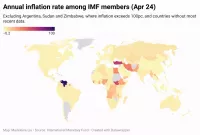
Inflation in economics signifies an increase in the average price...
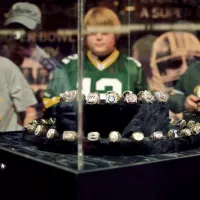
The Super Bowl is the annual championship game of the...
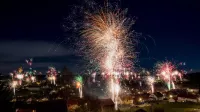
New Year's Eve observed on December st marks the final...
Virginia officially the Commonwealth of Virginia is a state located...
Trending

7 months ago Jane Fonda Stuns at Cannes Closing with Caged Heels and 3D Florals
1 month ago Drake London Suffers PCL Sprain, Out for at Least One Week.

Larry Page is an American entrepreneur and computer scientist who co-founded Google with Sergey Brin He is highly regarded for...
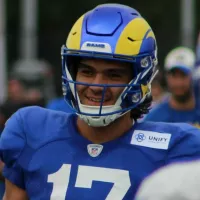
Makea Puka Nacua is a professional American football wide receiver for the Los Angeles Rams He played college football at...
4 months ago Trump Involved in Kennedy Center Honors Announcement, Surprising Staff with his appearance.

Lolita a novel by Vladimir Nabokov centers on Humbert Humbert a literature professor obsessed with Dolores Haze a -year-old girl...
Popular

Candace Owens is an American conservative political commentator and author...

Tucker Carlson is an American conservative political commentator known for...

XXXTentacion born Jahseh Dwayne Ricardo Onfroy was a controversial yet...

Ilhan Omar is an American politician currently serving as the...

Kashyap Pramod Patel is an American lawyer who became the...

Charles James Charlie Kirk was a prominent American right-wing political...
